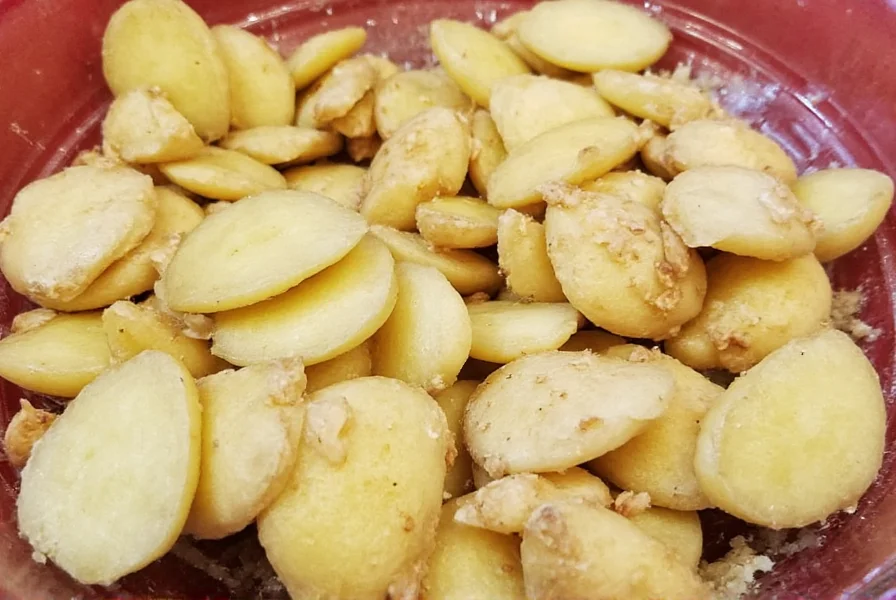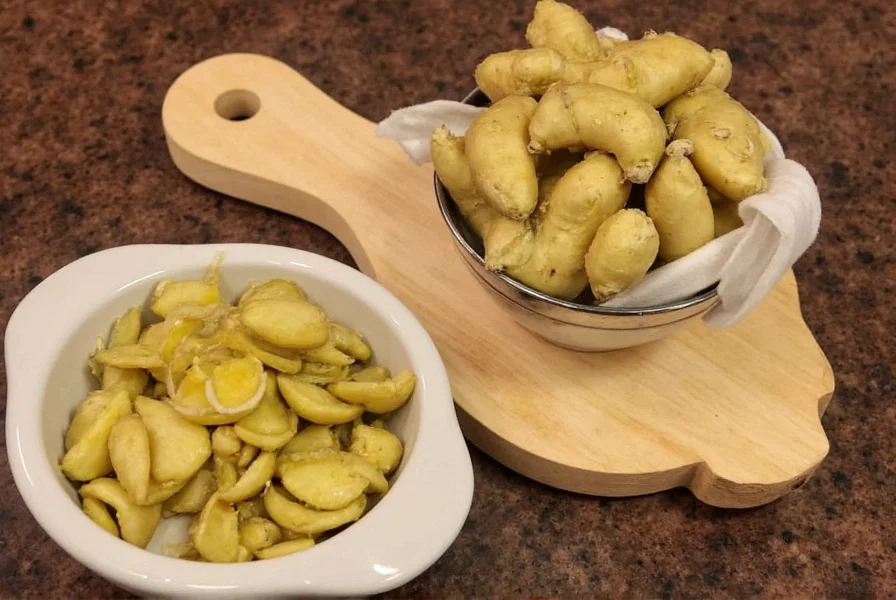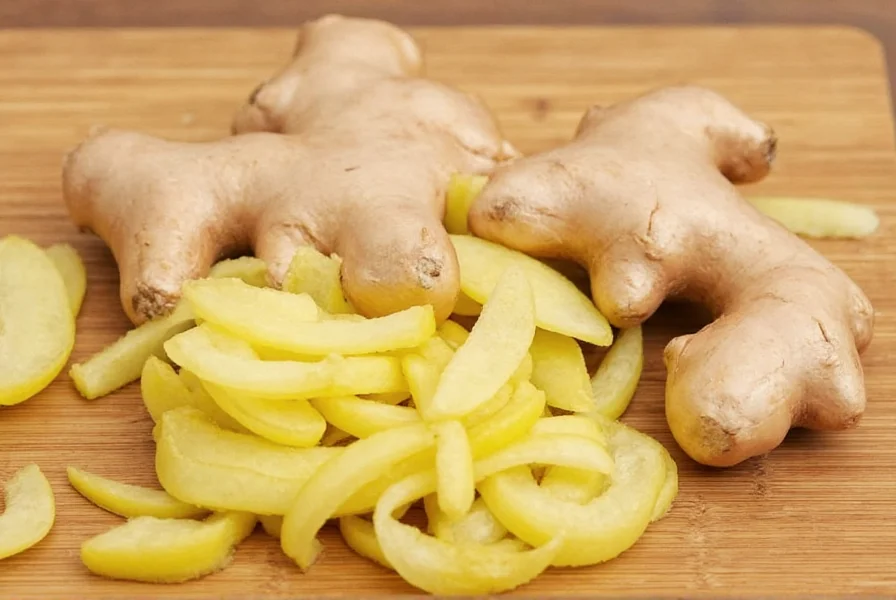Ginger isn't just a spice—it's a flavor powerhouse that transforms dishes with its warm, zesty character. Whether you're making Asian stir-fries, soothing teas, or baked goods, understanding how to properly prepare and cook ginger makes all the difference in your final dish. This guide covers everything from selecting the best roots to advanced cooking techniques that maximize flavor without overwhelming your recipe.
Selecting and Preparing Fresh Ginger
Choose firm ginger roots with smooth, taut skin and no wrinkles or soft spots. Younger ginger has thinner skin and higher moisture content, making it easier to work with for most cooking applications. Before cooking ginger, proper preparation ensures maximum flavor extraction:
- Peeling technique: Use the edge of a spoon to gently scrape off the skin. This method removes minimal flesh compared to using a vegetable peeler or knife.
- Cutting methods: Slice thinly for stir-fries, mince finely for marinades, or grate for dressings and baked goods.
- Quantity guidance: One tablespoon of freshly grated ginger equals approximately 1/8 teaspoon of ground ginger in recipes.
| Preparation Method | Best For | Flavor Intensity |
|---|---|---|
| Thin slices | Simmering in broths, teas | Moderate |
| Fine mince | Marinades, sauces | Strong |
| Grated | Baking, dressings | Intense |
| Whole chunks | Stocks, slow cooking | Mild |

Mastering Ginger Cooking Techniques
Understanding when and how to introduce ginger into your cooking process determines whether it enhances or dominates your dish. The timing of ginger addition affects both flavor profile and potency.
Stir-Frying and Sautéing
For Asian cuisine, add minced ginger to hot oil first (before other aromatics like garlic) to release its essential oils. Cook for 30-60 seconds until fragrant but not browned—this how to cook ginger for stir fry technique creates the flavor foundation for dishes like ginger chicken or vegetable stir-fries. Overcooking causes bitterness, so add other ingredients promptly after the ginger becomes aromatic.
Simmering and Boiling
When making soups, broths, or teas, add ginger early in the cooking process. For how to make ginger tea, simmer 3-4 thin slices in 2 cups of water for 15-20 minutes. Longer simmering extracts more gingerol (the compound responsible for ginger's heat), while shorter cooking preserves brighter notes. Remove ginger pieces before serving unless making a medicinal decoction where you'll chew the softened pieces.
Candying Ginger at Home
To create how to candy ginger at home treats, peel and slice ginger into 1/8-inch pieces. Simmer in equal parts water and sugar for 45 minutes until translucent. Drain, toss in additional sugar, and dry for 24 hours. This process transforms pungent ginger into sweet, chewy treats with crystallized exteriors while preserving the root's digestive benefits.

Advanced Ginger Applications
Professional chefs leverage ginger in unexpected ways that home cooks can easily replicate. Understanding different methods to cook ginger expands your culinary possibilities beyond basic recipes.
Ginger Oil Infusion
Create a versatile flavor base by heating 1 cup neutral oil with 1/4 cup grated ginger over low heat for 20 minutes. Strain and store in a dark bottle. This ginger oil works beautifully in dressings, as a finishing drizzle, or for stir-frying—offering concentrated flavor without fibrous bits.
Roasted Ginger Technique
For deeper, caramelized notes, roast whole ginger chunks at 400°F (200°C) for 20-25 minutes. This ginger cooking tips for beginners method mellows the sharpness while developing complex flavors perfect for autumn dishes, roasted vegetables, or blended into smoothies.
Preserving Cooked Ginger
Store freshly cooked ginger in an airtight container in the refrigerator for up to 5 days. For longer storage, freeze grated ginger in ice cube trays with water or oil—these ginger preparation techniques preserve flavor for up to 6 months. Never store raw or cooked ginger at room temperature for extended periods as it quickly develops mold.
Common Ginger Cooking Mistakes to Avoid
Even experienced cooks make these ginger preparation errors that compromise flavor:
- Overcooking: Ginger turns bitter when exposed to high heat for too long—add toward the end of cooking for delicate dishes
- Improper storage: Refrigerate fresh ginger in a paper bag (not plastic) to prevent moisture buildup and mold
- Using old ginger: Dried-out ginger lacks flavor potency—choose roots that feel heavy for their size with taut skin
- Incorrect substitution: Fresh and ground ginger aren't interchangeable 1:1—use the conversion ratios mentioned earlier
When to Add Ginger in Cooking: Timing Matters
The timing of ginger addition dramatically affects your dish's flavor profile. For how to use ginger in recipes effectively:
- Early addition (first 5 minutes of cooking): Creates deep, integrated flavor suitable for curries and stews
- Middle addition (during main cooking phase): Balances presence without dominating, ideal for soups and braises
- Late addition (final 2-3 minutes): Preserves bright, spicy notes perfect for stir-fries and finishing sauces
Understanding when to add ginger in cooking transforms it from a background note to a carefully orchestrated flavor element in your culinary repertoire.











 浙公网安备
33010002000092号
浙公网安备
33010002000092号 浙B2-20120091-4
浙B2-20120091-4